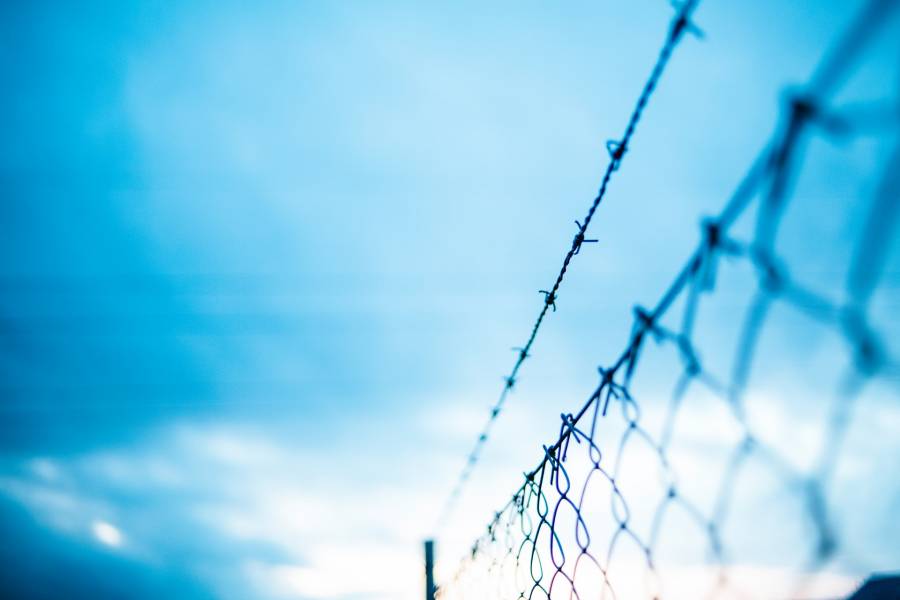Table of Contents
If you have a wire fence installed on your landed property, there is every chance it can get sagged if it is not correctly stretched.
So, we will look into how to stretch a wire fence.
A wire fence will start sagging after experiencing pressure from the wind, animals, and humans.

However, if the wire fence is appropriately stretched, it can withstand the pressure for years.
This detailed guide will dive deep into the steps you need to follow to stretch a wire fence.
Also, we’ll point out some wire fencing precautions to keep in mind when building a wire fence.
About Stretching Wire Fence
Stretching a wire fence is not child’s play. The task involved can be difficult without a proper understanding of what needs to be done.
Also, you need to identify the type of wire fence to find the proper stretching tactics. It is because the method of stretching varies.
There are several types of wire fences. Some of which include:
- Steel Wire Fence
- Woven Wire Fence
- Barbed Wire Fence
- Electric Wire Fence
- Welded Wire Fence
- Aluminum Wire Fence
Knowing the type of wire fence you have is necessary before deciding what method to use to stretch the fence.
That said, no matter the approach you apply, getting hold of a field wire fence and pulling on it to straighten it out can be tedious. It requires proper tactics.
The Purpose Of Stretching Wire Fence
The idea of having a wire fence installed is to help mark a boundary on your land and protect your property from intruders.
After a while, the wire fence might need replacement if it is not correctly stretched. Also, to prevent replacement costs, you must maintain your wire fence.
Stretching your wire fence when it is slack is crucial to maintenance.
No matter the type of wire fence you have, the primary purpose is to tighten the wire and secure the fence line.
Stretching wire fences is a fencing project that can be carried out in lawn areas, home gardens, animal farms, and open field pastures.
Wire stretching can be carried out when installing a wire fence or when looking to tighten a sagged wire fence. The task involved can be easy.
For this detailed guide, we will be looking at how to stretch a wire fence correctly.
Tools Needed For Stretching Wire Fence
As with building a wire fence, you need the right tools to stretch a wire fence whenever it gets slack.
You will waste a lot of productive time and energy if you don’t have the right tools when attempting to stretch it.
So, we will look at some of the tools needed for the process.
Here are some of the essential tools needed for stretching a wire fence:
- Stretcher Bars
- Wire Fence Splicer
- Wire Fence Stretcher
- Fence Staples & Pliers
- Wire Grip & Wire Cutter
- Leather Gloves & Goggles
- Tamping Tool & Crimping Tool
With these tools, you can significantly reduce the effort and time spent on the stretching task.
The Step-By-Step Guide On How To Stretch Wire Fence
With this step-by-step guide, it is essential to have a quick look at how to stretch wire fences.
Aside from pliers, a wire fence stretcher is a primary tool needed for stretching a wire fence. It is a mechanical tool made of steel.
It’s designed to help remove the slack from wire fences.
Wire fence stretchers come in different designs and are used to properly tension wire fences.
Without further ado, here are the steps to follow to stretch your wire fence correctly:

Step 1: Plant Dummy Posts
To stretch a wire fence, you must check if there’re dummy posts for pulling the wire tight. If there’s none, plant the posts at the correct spot.
It will make your job easier.
Also, you need to ensure the fence posts are correctly aligned to form a straight fence line.
Step 2: Lay Out The Wire Fence
Get the roll of wire fence and lay it flat on the ground. Start at one of the corner posts and gently unroll the wire along the straight stretch of fence posts.
Stop at the other corner post.
Rolling the wire down the fence line is to completely lay out the wire fence.
Step 3: Wrap Horizontal Wires Around The Corner Post
At this point, pull the end of the wire fence up against the first corner post. Position the base of the wire 2 inches from the ground.
Now, wrap the horizontal wires on the fence around the post.
Then, twist the end of the wires around themselves with a plier to ensure proper wrapping.
Step 4: Attach The Wire Fence Stretcher
At this stage, you will need to attach a wire fence stretcher to stretch and tighten the wire fence.
Wire fence stretchers come in the form of stretcher bars. They are crucial for stretching the wire of woven and field fences.
It consists of a long iron bar with hooks attached.
Line the wire up on the fence stretcher you choose to use. Ensure the line is even and brace the fence stretcher.
Then, use the ratcheting mechanism to pull the fence wire tight gradually.
Step 5: Secure The Fencing Wire Connection
Using wooden fence posts, you can secure the fencing wire connection to all the posts with fencing staples.
Using steel fence posts, you can quickly secure the fencing wire connection by attaching wire fasteners with a pair of pliers.
Step 6: Release Pressure On The Wire Fence Stretcher
The final step involves releasing pressure on the wire fence stretcher. Then, pull the fence very tight between the corner post and the brace post.
Now, wrap the horizontal wires tightly around the corner post. Fasten them properly by wrapping them around the matching wire severely.
In the end, ensure you check the tension on the wire fence by running along the entire line.
Wire Fencing Precautions
As pointed out earlier in this wire fencing guide, your wire fence is an essential protective tool on your property.
Whether restricting your lawn area or shielding your garden from intruders, you must ensure the wire fence is stretched correctly and installed.
When installing a wire fence, there are precautions to keep in mind.
If you don’t install your wire fence properly, you risk running into unwanted issues after the installation.
So, here are standard wire fencing precautions to keep in mind:
- Get approval from the proper authority
- Ensure you use the suitable wire fencing tools
- Proper installation of fencing posts is crucial
- Choose the suitable fencing wire that best suits your purpose
- Mark the fencing boundary to avoid placing the fence in the wrong spot
- You should ensure the wire fence is adequately stretched to prevent sagging
- Proper maintenance of the wire fence has to be carried out after installation
This section aims to ensure you build your wire fence correctly to prevent repairs.
Conclusion
Wire fences are designed for use in homes, gardens, and green pastures.
It helps keep intruders away from your property and also helps farmers keep animals in the pasture.
When building a wire fence or repairing an old one, it is vital to stretch the wire fence to get it tight.
You can stretch a wire fence with a quality stretcher without hassle. If your wire fence is correctly stretched and tightened, it can last for years with essential maintenance.
Hopefully, this detailed guide will help you in your bid to stretch your wire fence correctly.




